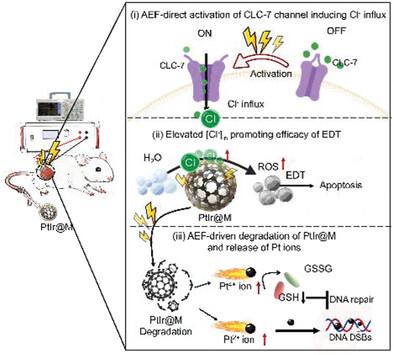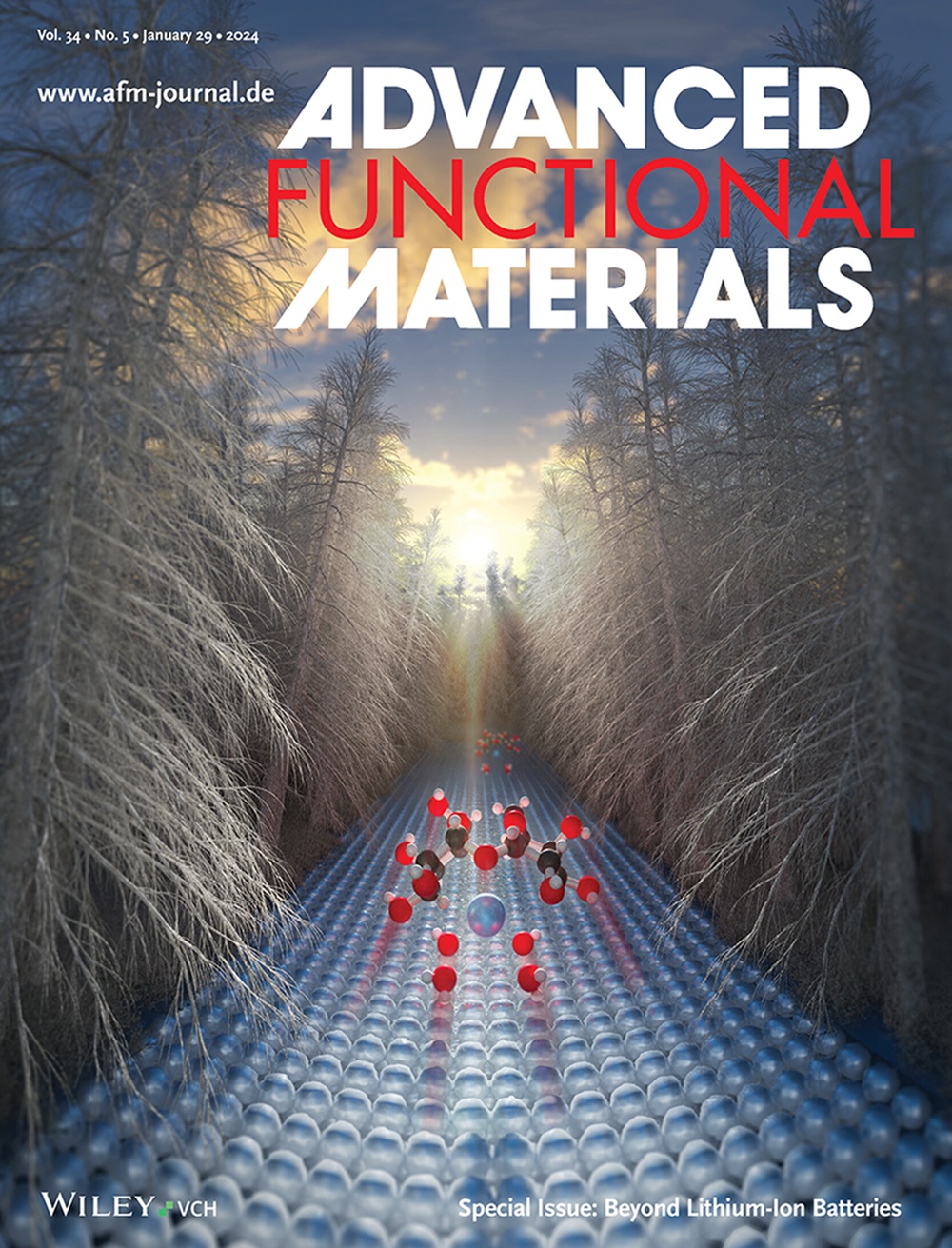Electro-Driven Surface-Plus PtIr Nanocatalyst Degradation and Ion Channel Activation for Enhanced Tumor Dynamic Metal-ion Therapy with Minimal Toxicity
IF 18.5
1区 材料科学
Q1 CHEMISTRY, MULTIDISCIPLINARY
引用次数: 0
Abstract
Electrodynamic therapy (EDT), with its unique advantages, has demonstrated promising therapeutic effects in tumor treatment. However, its efficiency is often limited by the low concentration of chloride ions (Cl⁻) within tumor cells, and the non-degradability of the noble metal nanomaterials necessarily used in this strategy gives rise to safety concerns. Here, we identify voltage-gated chloride channels (CLC-7) as a potential chloride-regulation target in melanoma and report an enhanced electro-driven dynamic therapy strategy utilizing surface-enhanced PtIr@M nanocatalysts to address above challenges. Under an alternating electric field (AEF), the activation of CLC-7 channel promotes a massive influx of Cl⁻ from the extracellular side and enhances the catalysis of water dissociation on PtIr@M nanocatalysts to generate toxic hydroxyl radicals (·OH). Moreover, PtIr@M with large surface area provides abundant exposed active sites that facilitate electro-driven self-dissociation and followed release of metal Pt ions, thereby inducing the DNA damage. More importantly, this electrically controlled degradation also effectively minimizes the toxicity associated with heavy metal accumulation. It is believed that this electro-propelled ·OH and Pt ions generation for synergetic tumor therapy based on surface-plus PtIr nanocatalyst represents a promising therapeutic strategy characterized by high-efficiency and biodegradability.

求助全文
约1分钟内获得全文
求助全文
来源期刊

Advanced Functional Materials
工程技术-材料科学:综合
CiteScore
29.50
自引率
4.20%
发文量
2086
审稿时长
2.1 months
期刊介绍:
Firmly established as a top-tier materials science journal, Advanced Functional Materials reports breakthrough research in all aspects of materials science, including nanotechnology, chemistry, physics, and biology every week.
Advanced Functional Materials is known for its rapid and fair peer review, quality content, and high impact, making it the first choice of the international materials science community.
 求助内容:
求助内容: 应助结果提醒方式:
应助结果提醒方式:


